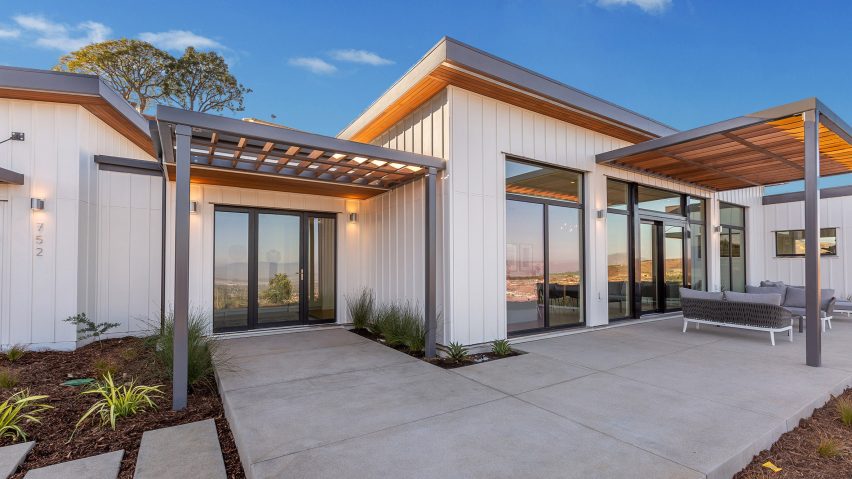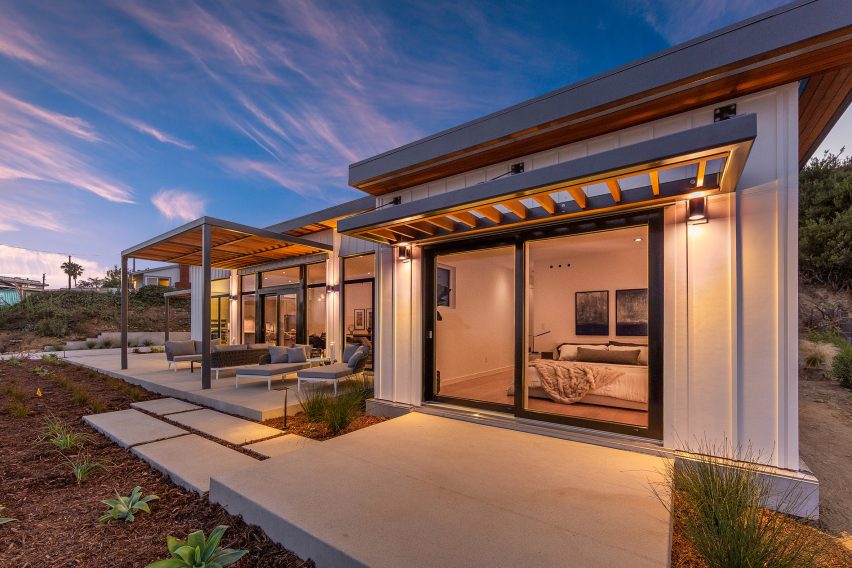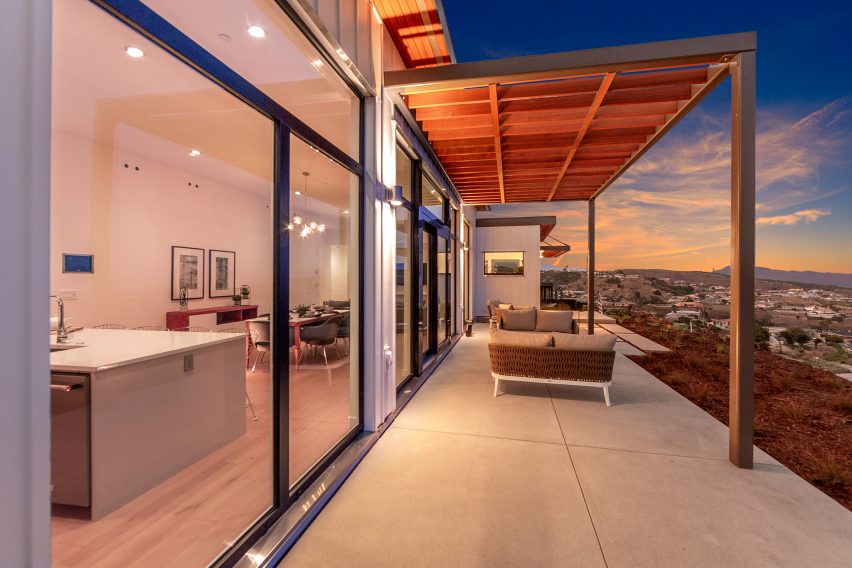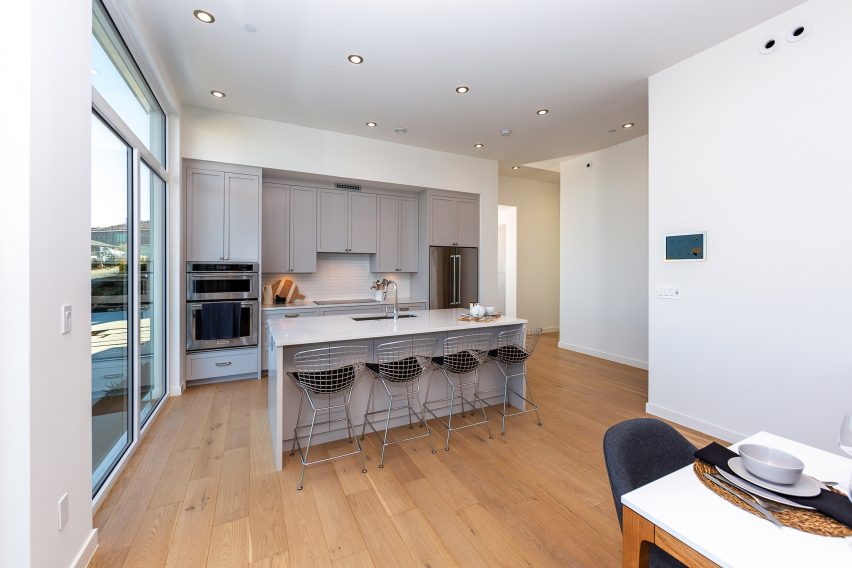
Dvele creates prefabricated homes that generate and store their own energy
California company Dvele has designed prefabricated, off-grid houses with solar panels that allow people to stop relying on "antiquated power grids".
Dvele – named after the Norwegian word for a dwelling – has been selling prefabricated homes since it was established in 2017 in San Diego. It has recently made the switch so that all of its models are self-powered.
The homes are intended to serve as a "solution that addresses climate change and power grid resilience" according to Dvele.
Devel offers 11 residential designs, ranging from a tiny home to a four-bedroom dwelling. The homes are modern in style with a flat roof and minimal ornamentation. Layouts can be customised as needed, and the starting cost is $190,000 (£163,500).

All systems are powered by electricity, and the new designs come with 28 solar panels that can generate at least 6,400 kilowatt hours per year for a California building. Energy that is not used right away can be stored in a battery.
"A Dvele home is capable of utilising its solar array and battery backup system to make them fully grid-independent and insulated from the inconveniences and safety risks associated with long-term power outages, not to mention significant financial savings," the company said.
Dvele co-founder and CEO Kurt Goodjohn added that self-powered homes, such as those offered by Dvele, help address the issue of "an antiquated power grid that will take many years and billions of dollars to fix".
The new designs coincide with a new California building code that requires newly constructed homes to come equipped with photovoltaic panels. The mandate was passed in 2018 and went into effect on 1 January this year.

In addition to being able to generate and store clean energy, Dvele emphasised that its homes are designed to reduce power usage. Combined, these factors enable them to operate independently of the electric grid.
"The solar mandate is a great step in the right direction for creating more green energy, but it fails to solve the entire problem, which also includes the inefficient management and use of energy in most homes by our antiquated power grids," said Goodjohn.
Another key feature of a Dvele home is a high-performance building envelope. The framing system consists of kiln-dried wooden studs measuring two by six feet (61 by 183 centimetres). Engineered wooden trusses comprise the floor and ceiling structure.
Walls are made of structural-grade plywood and high-performance insulation with an R-value of 16. An air and weather barrier is applied to seal up any openings. For the roof, the company uses structurally insulated panels, commonly referred to as SIPs.

There are several options for exterior cladding, including corrugated metal panels and tongue-and-groove wooden siding.
The homes come with energy-efficient appliances, such as induction stovetops and electric hot water heaters. Other features are multi-paned windows, in-wall monitors for detecting moisture, and air and water filtration systems.
Dvele claims its building process is more sustainable and expedient than traditional construction methods, as do most other prefab housing manufacturers.
To help reduce construction waste and unforeseen delays, the buildings compose of modules that are fabricated in a foundry and then transported to the site. A crane is used to secure the modules to a pre-built foundation – a process that takes under 24 hours.

"The final steps involve stitching the modules together, patching drywall, attaching the roof and connecting utilities," said Brandon Weiss, Dvele's chief innovation officer.
The company said its overarching goal is to bring "energy independence to homeowners" and to provide housing solutions in an era of climate change.
Designs for off-grid buildings are emerging as climate change and natural disasters intensify around the globe. Other self-sufficient designs include a rustic dwelling in Chile that is lifted above the ground, a black cabin in Upstate New York by Marc Thorpe, and a prefab residence on a Brazilian farm by Studio MK27.
Photographs are by Dvele.